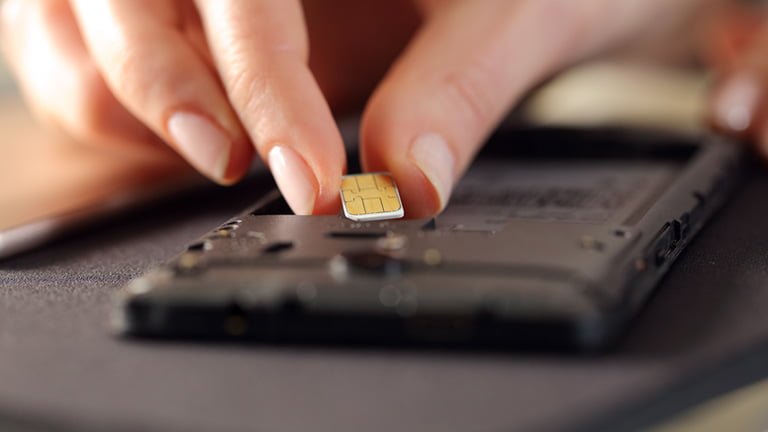
In today’s world of wireless communication, using the internet while traveling abroad is becoming more crucial as social media platforms developed. Anyone planning on traveling abroad is likely to be wondering how to stay connected while traveling and which is better between eSIM vs Physical SIM.
Portable-WiFi rental was a common option for travelers, but it is quite inconvenient to carry the WiFi device all the time and return it back where you borrowed it. So more people tend to use traveler SIM cards to use data abroad. People can exchange their original SIM card to a local SIM card to use data at their destination country or city. Recently dual SIM with eSIM is the most innovative way of using local data abroad by simply installing a secondary cellular plan with scanning QR code.
As an increasing amount of people are traveling abroad again after the Pandemic, it is a good time to compare the different options of data roaming in detail. Especially for people who haven’t decided which choice is better for travel between SIM cards and eSIM, we will cover comparison between pros and cons of eSIM vs physical SIM in this guide. Is eSIM better than physical SIM? Let’s find out.
What is a SIM card?
A physical SIM card is a small, removable card that contains a chip and is used to store the subscriber’s mobile network identity. It is inserted into the device and is used to authenticate the subscriber to the network. Physical SIM cards have been the standard for many years and are still widely used in many countries.
What is an eSIM (Embedded SIM)?
An eSIM, or embedded SIM, is a virtual SIM card that is integrated into the device and cannot be removed. Instead of using a physical card to store the subscriber’s network identity, an eSIM stores the information on the device’s internal memory. Many smartphones that recently came out with eSIM feature.

What are the advantages of Physical SIM?
In Europe, physical SIM cards have been the standard for many years and are still widely used in many countries. Here are the advantages of physical SIM cards.
- Wide-range Compatibility
One of the main advantages of physical SIM cards is that they are compatible with a wide range of mobile devices, including older models and budget devices. Users should be able to use the same SIM card on multiple devices, regardless of the manufacturer or model.
- Cost-Effective
Physical SIM cards are generally less expensive than auto-roaming, as they mostly offer local data at the destination. This can make them a more cost-effective option for users who are looking for an affordable way to connect to the mobile network while vacationing in Europe or visiting different cities for work.
- Easy to Replace
They can be easily replaced if they become damaged or lost. This means that users can quickly and easily obtain a new SIM card and continue using their mobile devices without any disruption. In fact, physical SIM cards can be easily transferred from one device to another. Users can take their mobile network identity with them when they switch to a new device.
- Widespread Availability
Widely available in Europe, there are many mobile network operators that offer physical SIM cards. It is easy to obtain a physical SIM card, regardless of the location or the mobile network operator one uses.
What are the disadvantages of Physical SIM?
Despite the advantages, physical SIM cards have several different disadvantages, especially in terms of convenience. People may think of them as unavoidable inconveniences for using Physical SIM, but it is crucial to check disadvantages before using Physical SIMs.
- Limited Convenience
Physical SIM cards require users to carry a separate card, which can be inconvenient and can easily get lost or damaged. It can be particularly problematic for users who frequently switch between different devices, as they need to physically move the SIM card between devices.
- Reduced Security
It is worth keeping in mind that physical SIM cards are less secure than eSIMs, as they can be physically removed or lost. This can leave the user’s mobile network identity vulnerable to theft or misuse.
- Device Compatibility
Physical SIM cards may not be compatible with newer devices that are designed to support eSIMs. This can limit the user’s ability to upgrade to newer devices and can also limit their choice of devices.
- Time-Consuming
It can be time-consuming to install and set up a physical SIM card as it would require the user to purchase online and receive it by delivery, or offline by visiting stores. People need to physically insert the SIM card into the device and activate it with the mobile network operator.
- Costly Replacements
If a physical SIM card is lost or damaged, the user will need to purchase a new card and have it activated with the mobile network operator. This can be costly and time-consuming and can result in a temporary disruption to the user’s mobile service.
What are the advantages of eSIM?
eSIMs, or electronic SIM cards, are becoming increasingly popular around the world as a more convenient and versatile alternative to traditional physical SIM cards.
- Convenience
eSIMs are integrated into the device, eliminating the need for users to carry a separate SIM card. This makes them more convenient to use, as users can easily switch between different devices without having to physically move the SIM card.
- Cost-Effective
As physical SIM cards, eSIM are also more reasonably priced than auto-roaming. Also, since they are considered digital products, people don’t need to pay for delivery or physical card plates as physical SIM cards. So eSIM can be more reasonably priced than physical SIM cards.
- Improved Security
Another reason why eSIMs have become incredibly popular is that they are more secure than physical SIM cards, as they cannot be physically removed or lost. It means that users can be confident that their mobile network identity is protected and secure.
- Recent Device Compatibility
eSIMs are compatible with a wide range of devices, including newer models that are designed to support eSIMs. This allows users to upgrade to newer devices and enjoy the latest technology without having to switch to a new SIM card.
- Easy Purchase & Set Up
It is easy to set up and activate an eSIM as the process can be completed remotely and does not require a physical visit to a store or mobile network operator. It can save users time and effort, and can also reduce the cost of activating a new SIM card.
What are the disadvantages of eSIM?
eSIMs have various advantages since it is the most latest technology for using cellular data. However, there are minor disadvantages that people need to consider before using eSIM.
- Limited Compatibility Issues
While eSIMs are compatible with many newer devices, they may not be compatible with older devices or some non-smartphone devices. This can limit the user’s ability to use the device. For now, some users may find that physical SIM cards are still a more convenient option.
- Technical Difficulties
They are a relatively new technology and some users may find that they are more technically complex than physical SIM cards. This can make it difficult for some users to set up and activate the eSIM, and can also result in a higher risk of technical issues.
- Lack of Physical Backup
Unlike physical SIM cards, eSIMs do not have a physical backup that can be used in the event of technical issues or other problems. This can be a disadvantage for users who want to have a physical backup in case of emergencies.
eSIM vs Physical SIM Comparison Table
| SIM cards | eSIM | |
| Compatibility | Available for most of the device May not be compatible for future devices | Not available for all devices currently More compatible for future devices |
| Cost | Reasonable than auto-roaming Additional fee for SIM card plates and delivery may required | Reasonable than auto-roaming Cheaper or similar to SIM cards No additional fee for SIM card plates and delivery |
| Convenience | Purchase and pick up offline Need to switch SIM cards physically | Purchase & receive online Install by scanning QR code |
| Security | Possibility for lost and damaged | No chance for physically damaged |

eSIM vs Physical SIM, choose your best option for the next trip
When planning a European trip, it’s important to consider the best option for one’s mobile connectivity needs. eSIMs and physical SIM cards both offer different advantages and disadvantages. Physical SIM cards are widely available and supported on a wide range of devices, making them a reliable option for travelers.
ComparingeSIM vs Physical SIM, eSIMs, on the other hand, offers the convenience of integrated, remote activation, and setup. Also, eSIMs are more secure, as they cannot be physically removed or lost, and offer more convenient ways to purchase and install. It is a good idea to use an eSIM from a reliable eSIM service provider such as eSIM Europe which will bring you many benefits while you are traveling.

